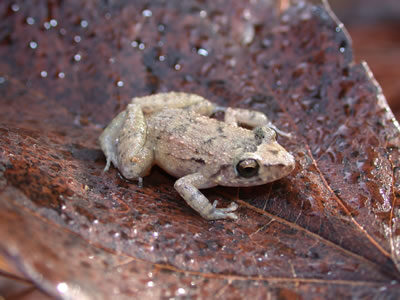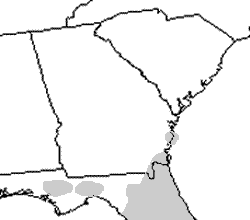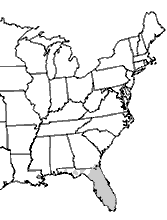Greenhouse Frog (Eleutherodactylus planirostris) – Introduced
Greenhouse Frog (Eleutherodactylus planirostris) – Introduced



Description: A tiny frog (12–30 mm; 0.5–1.2 in) with brown, reddish-brown, or bronze dorsal coloration. Two pattern phases occur: a mottled form with irregular dark and light markings (sometimes chevron-shaped bands), and a striped form with two light longitudinal lines. The belly is gray to white with occasional dark spotting. Eyes are reddish, and toes lack webbing.
Range and Habitat: Native to Cuba, the Bahamas, and parts of the West Indies. Introduced widely across Florida, southern Georgia, and scattered locations in the Southeast, as well as Jamaica, the Cayman Islands, the Bahamas, and Veracruz, Mexico. Found in residential areas, gardens, greenhouses, hardwood hammocks, dumps, gopher tortoise burrows, and moist ground-level vegetation or debris. Typically remains close to the ground in warm, humid microhabitats.
Habits: A terrestrial, nocturnal species most active after rainfall. It shelters under logs, boards, leaf litter, or other cover during dry conditions or by day. Breeding occurs primarily in northern Florida (shorter farther north) from May to September. Males call during rainy nights or after sprinklers. About 20 eggs are laid in moist vegetation or soil, hatching in ~2 weeks directly into froglets (no tadpole stage). This species disperses readily, often aided by human transport of potted plants, soil, and garden materials. Adults feed on small invertebrates such as ants, beetles, spiders, mites, and earthworms; predators include Cuban treefrogs, snakes, and birds.
Call: A short series of high-pitched, birdlike chirps (4–6 notes).
Conservation Status: Not protected; considered an introduced species in the U.S. Though less destructive than Cuban Treefrogs, they may compete with native amphibians for food and reduce insect diversity. Their rapid spread, aided by human activity, makes them a potential concern for native ecosystems.
